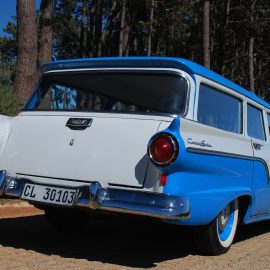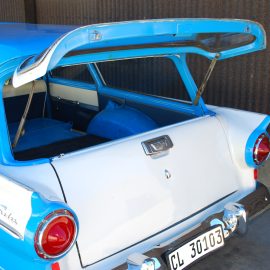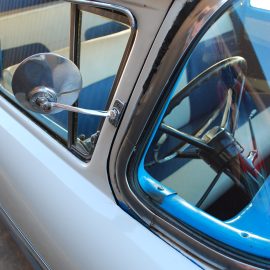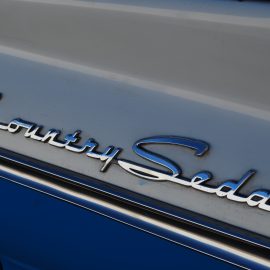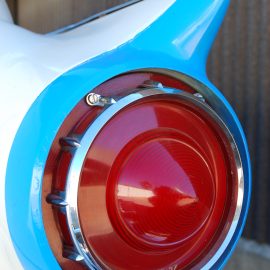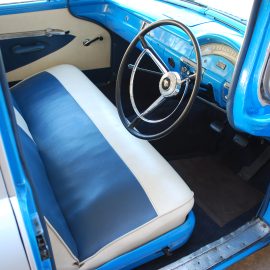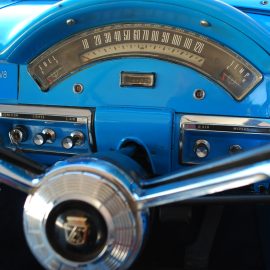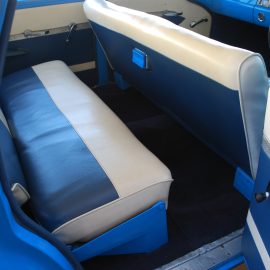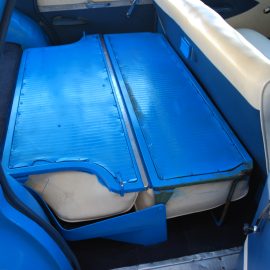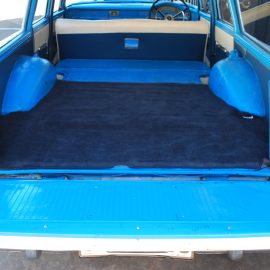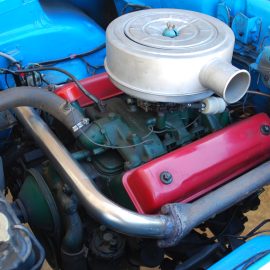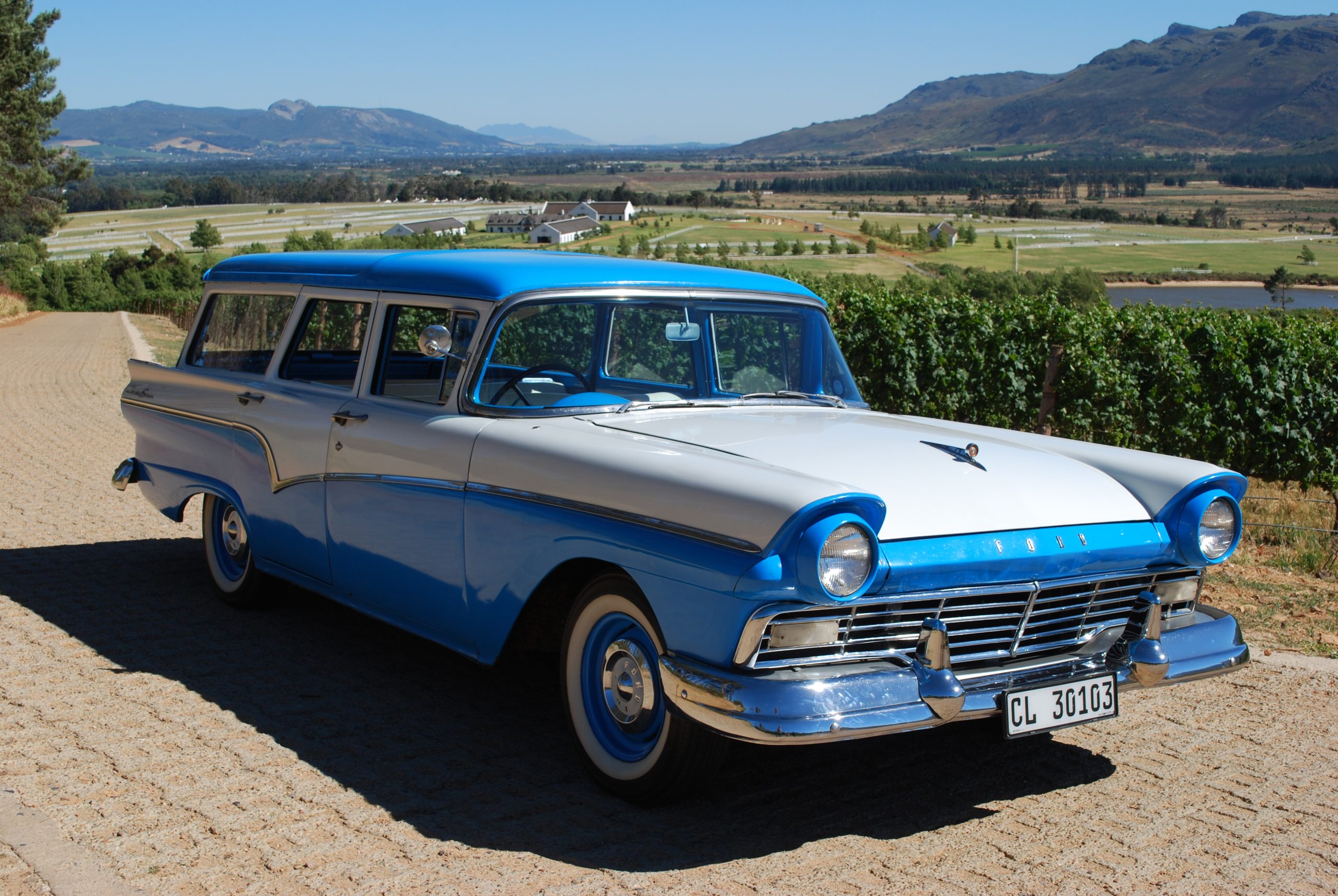
31 Aug Anniversary Celebration: Ford Country Sedan Station Wagon
A regular feature covering vehicles in the FMM collection that are celebrating an anniversary during 2022. This month Mike Monk steps back 65 years into moonshine country…
Ford has produced a staggering number of model lines over the years, some more memorable than others, and in the early post war period, the company – along with all the other American automakers – produced vehicles with a short life span in an effort to attract an increasingly affluent buying population. Being fresh and fashionable was the order of the day, and in October 1956 Ford introduced completely restyled models for the 1957 model year and to see out the decade. The first-year sales out-sold Chevrolet to make it America’s No.1 automaker,. However, although very popular at the time, with a couple of exceptions the ’57-’59 Fords never reached any great heights of desirability, which perhaps makes them a bit of a sleeper in classic car circles…
But for sure, the line-up certainly had merit – it consisted of a staggering 41 models. The chassis was all-new and stiffer, with the perimeter rails moved outwards so that the passenger compartment could be contained within them, which helped reduce body height without compromising headroom. Custom models and all the station wagon derivatives rode on a 116-inch (2 946 mm) wheelbase. As to be expected at the time, there were a number of engine and transmission options to add to the complexity – customers really were spoilt for choice. The ’57 Fords represented the largest number of model variations on a single assembly line that any car maker had ever produced.
The subject of this feature is one of the more humble derivatives, the Country Sedan Station Wagon. In between the two-door Ranch Wagon, two-door Del Rio and the (very British sounding) range-topping four-door Country Squire were two four-door Country Sedan models, one seating six, the other nine: I wonder why the sedan name was used for a wagon? Anyway, FMM has a six-seater version that has quite a background.
The Ford was bought in the early 1960s by Waldie Greyvensteyn, a hard-working, highly successful businessman with a passion – and outstanding collection – of old cars. Amongst his numerous businesses were three bottle stores and a couple of hotels in Brandfort, about 50 km north of Bloemfontein, and the wagon was routinely filled to capacity with liquor and used to deliver stock to these premises. Not only that, it was used as a tow vehicle for hauling Waldie’s classics to events as far and wide as the then Rhodesia and Mozambique. It racked up over 350 000 miles (560 000 km) in its early life before being retired with distinction and treated to an overhaul, respray and new trim in 1988 – a fact recorded on a plate fixed to the dashboard. The wagon was such an integral part of Waldie’s everyday life that when he was diagnosed with terminal cancer, his wish was for his coffin to be transported in the Ford – a poignant yet touching finale to a remarkable automobilist.
FMM later purchased the car, which under the bonnet had a 292ci (4785cc) overhead-valve cast-iron Y-block V8 – the same as the standard T’bird – that with a dual-barrel carb delivered 212 hp (158 kW) at 4 500 r/min and 403 N.m of torque. Like every other model in the range, the standard transmission was a ‘three on the tree’ column-shift manual with synchromesh on second and third, but an ‘automatic’ overdrive and a Ford-O-Matic torque converter autobox were listed as options – this Port Elizabeth built right-hand drive car has the manual with overdrive.
The ’57 Fords were lower, longer and with an increased wheelbase over the outgoing model, the new cars sat on 14-inch wheels for the first time and while single headlamps were retained, styling highlights included ‘streamlined wheel openings’, a front-hinged bonnet (complete with bull’s eye ornament) and a windscreen that wrapped around the A-pillar – a fashion of the time. Another nod to fashion was what Ford called ‘high canted fenders’ – sales speak for tail fins although, in truth, of all the American manufacturers, Ford’s interpretations of trend during its 10-year popularity was always on the conservative side.
Being a wagon, the tailgate was horizontally split with a slightly wraparound glass upper with C-type hinges and concealed assist springs that automatically popped the panel open when released. Knurled knobs held it in place thereafter. The lower section has extra-strong support arms at each side. Flipping the rear seat cushion forward – a metal hoop folds out to act as a leg – and folding down the squab realises a huge, flat load floor, looking big enough to carry a distillery let alone crates of liquor. I am 1,92 metres tall and able to stretch out on the deck with room to spare!
Inside, the dashboard featured recessed control knobs and the deep-dish steering wheel was also touted as a safety item. Seatbelts were an option but taken up by only six per cent of buyers. The arcing speedometer is flanked with fuel and coolant gauges, with warning lights for oil pressure and generator below.
The big V8 goes about its business without fuss. With abundant torque available from basement level, the Ford will pull away in second on the flat and run to over 100 km/h in the same gear. Top speed is over 160 km/h. With independent front suspension courtesy of short, swept-back lower control arms and coil springs, and lengthened, variable-rate leaf springs outboard of the chassis rails at the rear, the wagon’s ride is typical of its era – boulevard soft – yet because of its relatively low centre of gravity and wide-based suspension mountings, it does not wallow excessively. Hydraulic brakes provided confident retardation. All-round visibility is excellent with the runway fender tops framing the road ahead. While driving the Ford I soon understood why Waldie used it as his daily driver – solid, comfortable, spacious and powerful. What more could he have asked for?




